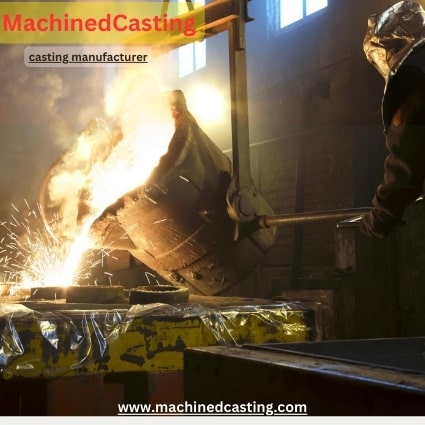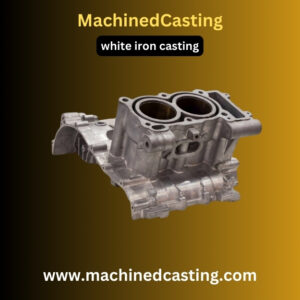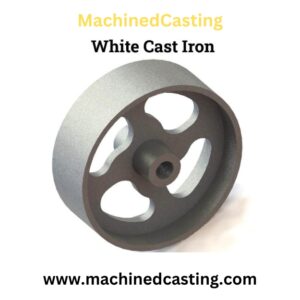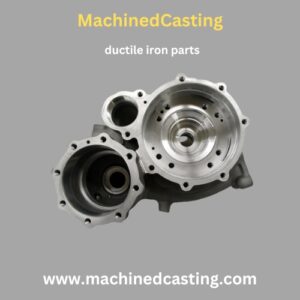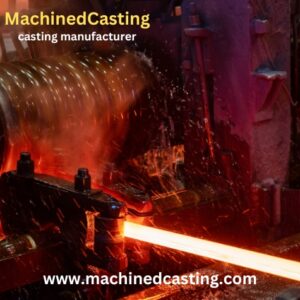In the realm of manufacturing, where precision meets artistry, lies the fascinating world of casting. It’s a process that bridges centuries-old craftsmanship with cutting-edge technology, where molten metal is transformed into intricate forms of function and beauty.
At the heart of this transformative journey stands the casting manufacturer – a guardian of tradition, a pioneer of innovation, and a maestro of metallurgy.
Picture a foundry, where the air is thick with the scent of molten metal and the clang of machinery reverberates through the halls. Here, skilled artisans and engineers collaborate in a dance of intellect and dexterity, orchestrating the creation of castings that will shape industries and define eras.
Each casting manufacturer is a custodian of this sacred craft, tasked with balancing time-honored techniques with modern advancements to achieve perfection.
But the role of a casting manufacturer extends far beyond the confines of the foundry floor. It’s a journey that begins with the raw materials – carefully selected alloys chosen for their unique properties and performance characteristics.
It’s a journey that demands meticulous planning and precision engineering, as designs are translated into molds and prototypes take shape.
Yet, amidst the heat and the hustle, there’s an undeniable sense of artistry at play. For every casting is not just a product of science and engineering but a testament to human creativity and ingenuity. It’s this marriage of technical expertise and creative vision that sets casting manufacturers apart, elevating their craft from mere production to a form of industrial poetry.
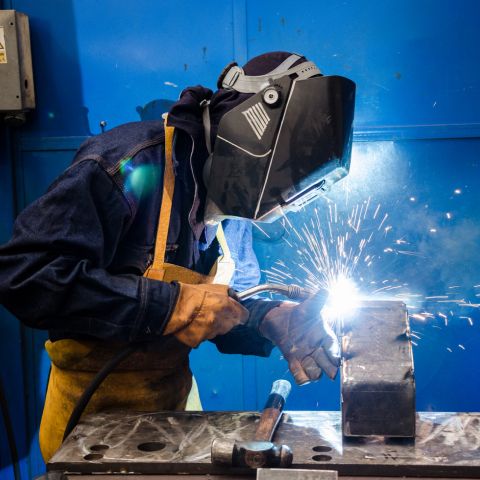
Shaping Dreams: The Role of a Casting Manufacturer
Let’s delve into the multifaceted world of casting manufacturing, exploring its history, techniques, and the pivotal role played by these unsung heroes of industry. For more information visit here.
The Origins of Casting Manufacturing
Casting has been practiced for millennia, dating back to ancient civilizations like the Mesopotamians and Egyptians who utilized rudimentary techniques to shape metals into tools, weapons, and ornaments.
However, it wasn’t until the Industrial Revolution that casting manufacturing underwent a significant transformation, evolving from artisanal practices to large-scale production methods.
The advent of mechanization and the development of more sophisticated materials revolutionized the casting industry, enabling manufacturers to produce intricate components with unprecedented efficiency and accuracy.
From the humble foundries of the 18th century to the state-of-the-art facilities of today, casting manufacturing has continually evolved, driven by a relentless pursuit of innovation and excellence.
The Art and Science of Casting
At its core, casting is the process of pouring molten metal into a mold to create a desired shape. However, behind this seemingly straightforward technique lies a complex interplay of science, engineering, and craftsmanship.
The journey begins with the selection of raw materials – alloys carefully chosen for their unique properties such as strength, durability, and corrosion resistance. These alloys are melted in furnaces, reaching temperatures exceeding 2,000 degrees Fahrenheit, before being poured into molds crafted with precision and attention to detail.
But casting is more than just pouring molten metal into a mold. It requires a deep understanding of metallurgy, thermodynamics, and fluid dynamics to control the flow of metal and ensure the integrity of the final product. Advanced techniques such as investment casting, sand casting, and die casting offer manufacturers a range of options to suit diverse applications and requirements.
The Role of the Casting Manufacturer
In the complex ecosystem of manufacturing, the casting manufacturer occupies a unique position. They are not merely producers of components but architects of possibility, transforming abstract designs into tangible realities. Their expertise spans a multitude of disciplines, from metallurgy and engineering to design and quality control.
One of the primary responsibilities of a casting manufacturer is to collaborate closely with clients to understand their needs and objectives. Whether it’s a prototype for a new product or a high-volume production run, the manufacturer must tailor their processes to meet the specific requirements of each project.
From the initial design phase to the final inspection, the casting manufacturer oversees every aspect of the production process, ensuring that each casting meets the highest standards of quality and performance. This meticulous attention to detail is essential, particularly in industries where safety, reliability, and precision are paramount.
But perhaps the most critical role of the casting manufacturer is that of an innovator. In an ever-changing landscape, where new materials, technologies, and manufacturing methods emerge with each passing day, the manufacturer must stay ahead of the curve. Whether it’s implementing advanced automation systems or experimenting with novel alloys, innovation is the lifeblood of the casting industry.
Challenges and Opportunities
Like any industry, casting manufacturing is not without its challenges. Rising material costs, fluctuating demand, and increasing competition pose significant hurdles for manufacturers to overcome. Moreover, the push towards sustainability and environmental responsibility necessitates a reevaluation of traditional processes and practices.
However, amidst these challenges lie tremendous opportunities for growth and advancement. The increasing adoption of digital technologies such as 3D printing and computer-aided design (CAD) has opened up new possibilities for casting manufacturers, allowing them to create complex geometries with unprecedented speed and precision.
Furthermore, the growing emphasis on customization and personalization presents manufacturers with the chance to differentiate themselves in a crowded marketplace. By leveraging their expertise and capabilities, casting manufacturers can offer bespoke solutions tailored to the unique needs of each client, fostering long-term partnerships and driving continued success.
Embracing Sustainability
In recent years, the casting industry has increasingly turned its attention to sustainability, recognizing the importance of minimizing environmental impact and promoting responsible manufacturing practices. Casting manufacturers are implementing various initiatives to reduce energy consumption, optimize resource utilization, and minimize waste generation.
One approach gaining traction is the adoption of recycled materials and eco-friendly processes. By repurposing scrap metal and utilizing recycled alloys, manufacturers can significantly reduce their carbon footprint while also minimizing reliance on finite resources.
Additionally, innovations in process efficiency and waste management techniques are helping casting facilities operate more sustainably, ensuring that production remains environmentally conscious without compromising quality or performance.
Navigating Technological Advancements
The rapid pace of technological advancement presents both challenges and opportunities for casting manufacturers. On one hand, emerging technologies such as additive manufacturing (3D printing) and advanced simulation software are revolutionizing traditional casting processes, offering new avenues for design innovation and production optimization.
On the other hand, keeping pace with these advancements requires constant adaptation and investment in research and development. Casting manufacturers must continually upgrade their equipment, train their workforce, and stay abreast of the latest technological trends to remain competitive in an increasingly digitized landscape.
Investing in Talent and Training
Despite the proliferation of automation and digital tools, the human element remains indispensable in casting manufacturing. Skilled artisans, engineers, and technicians play a vital role in ensuring the quality, reliability, and efficiency of the production process.
Recognizing the importance of human capital, casting manufacturers are investing in talent development and training programs to cultivate the next generation of industry professionals. Apprenticeship programs, vocational training initiatives, and partnerships with educational institutions are helping to bridge the skills gap and attract new talent to the field.
Conclusion:
In conclusion, the role of the casting manufacturer is multifaceted and dynamic, encompassing a blend of tradition, innovation, and sustainability. As the industry continues to evolve, casting manufacturers must embrace change, adapt to technological advancements, and prioritize sustainability to thrive in an ever-changing global marketplace.
By leveraging their expertise, embracing innovation, and fostering a culture of sustainability, casting manufacturers can continue to shape dreams and redefine the boundaries of what’s possible. With creativity, ingenuity, and a commitment to excellence, the future of casting manufacturing is bright, promising new horizons and endless possibilities.
